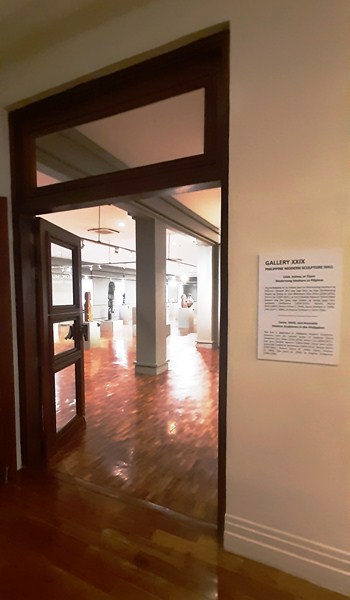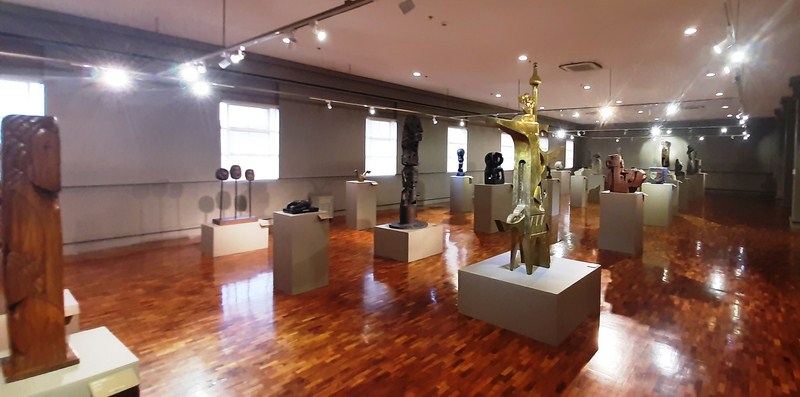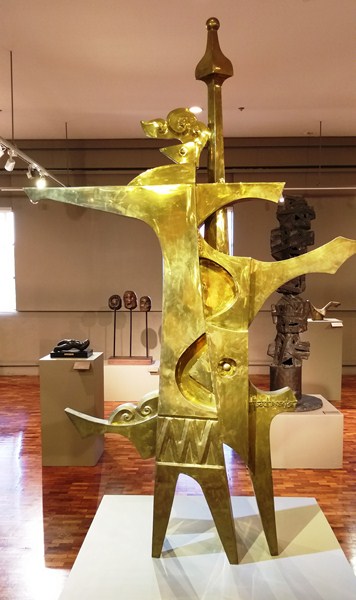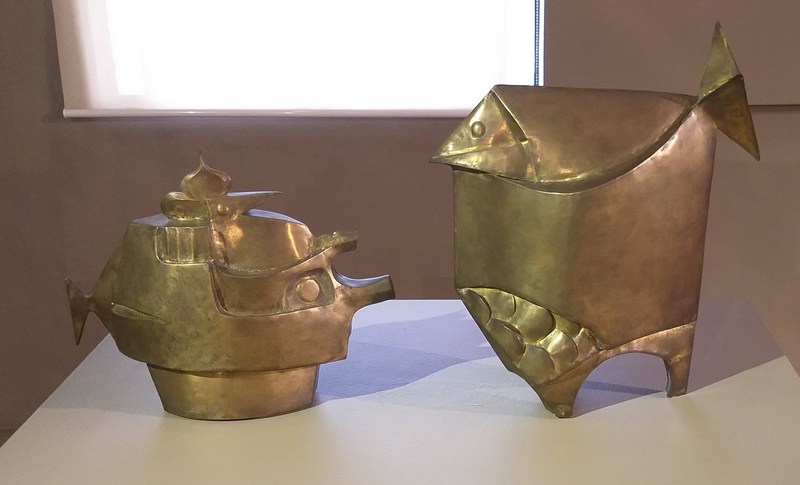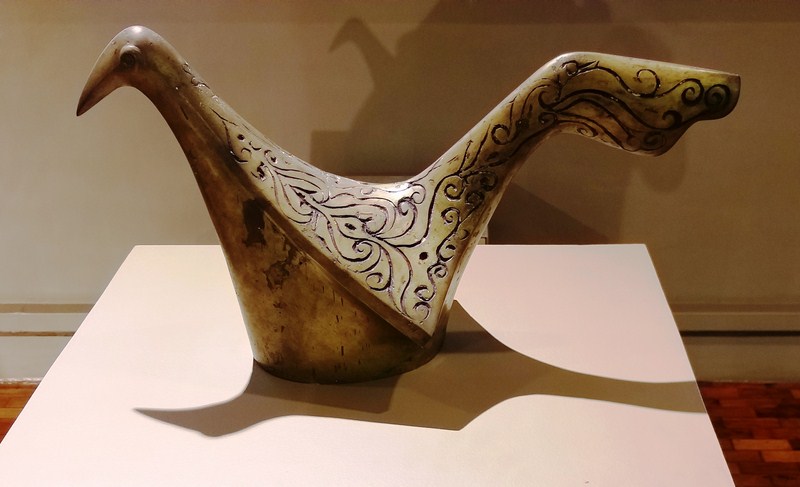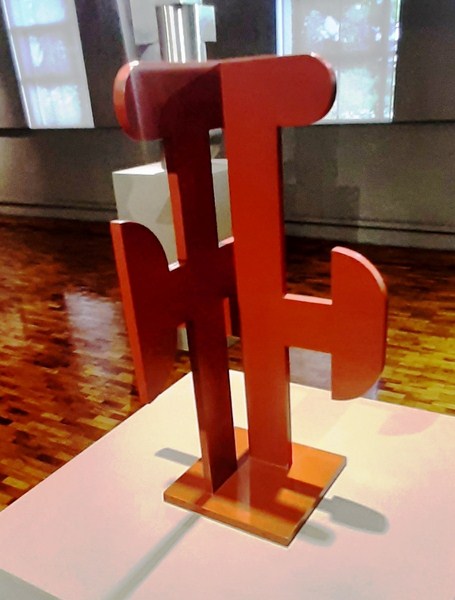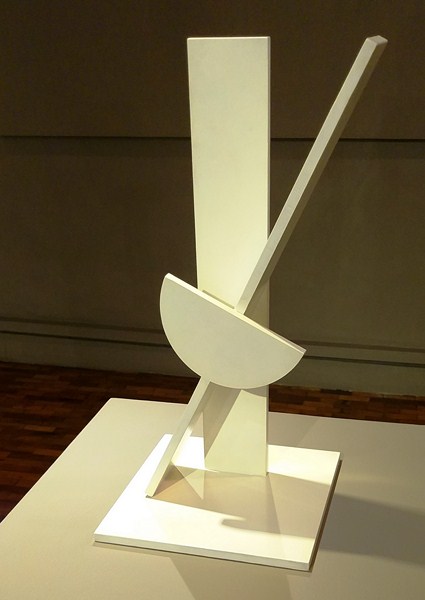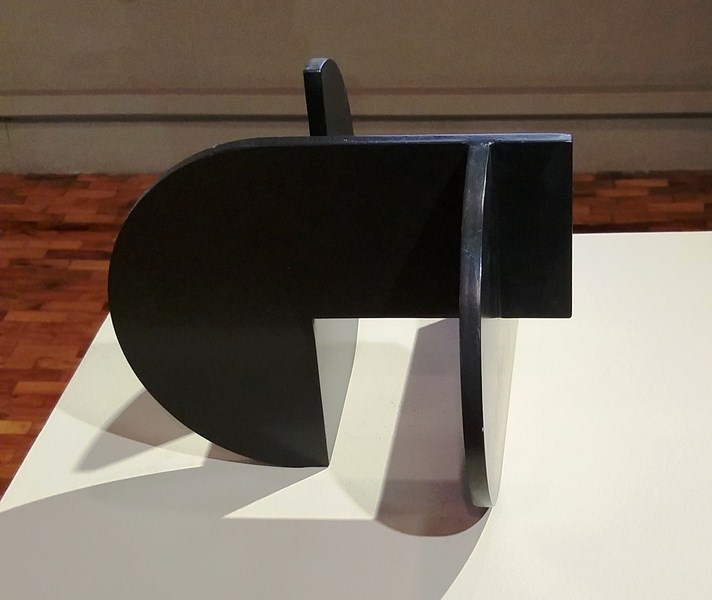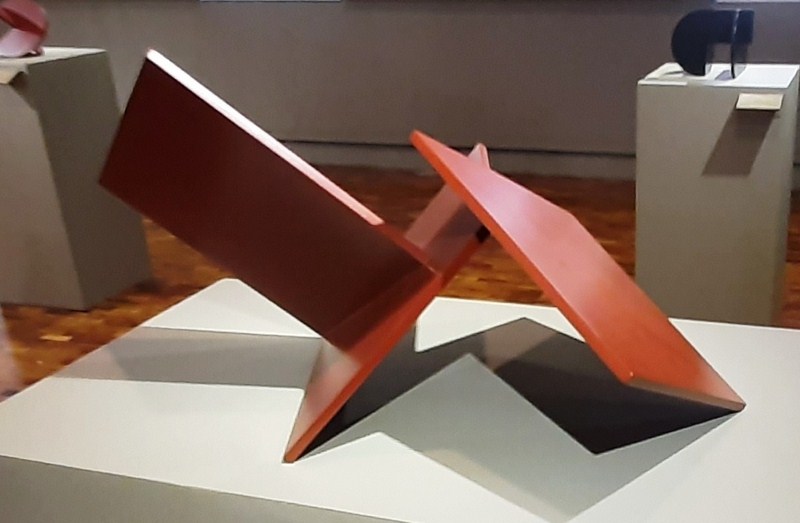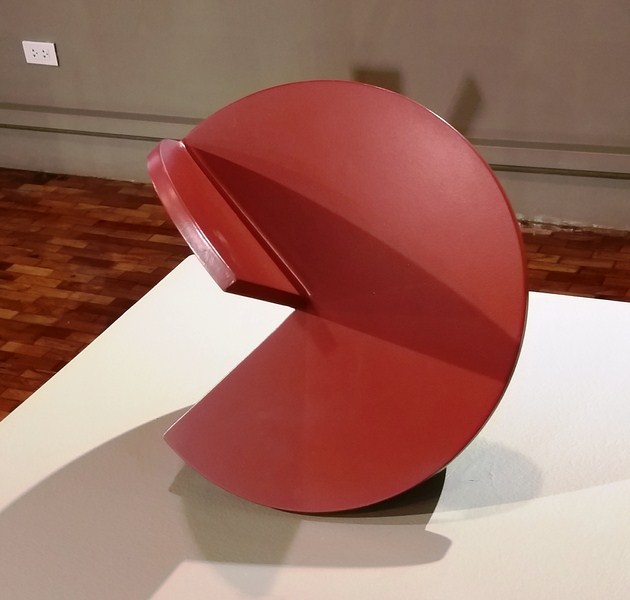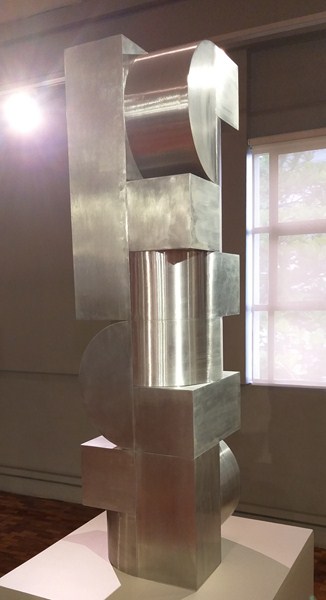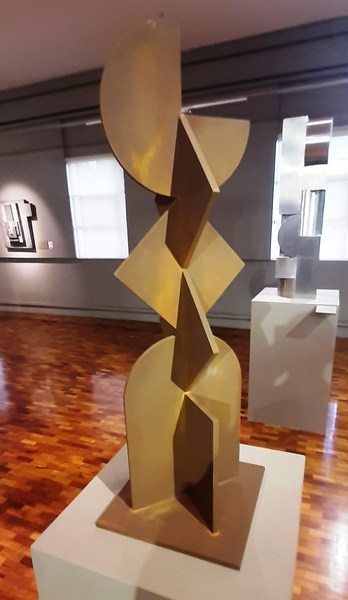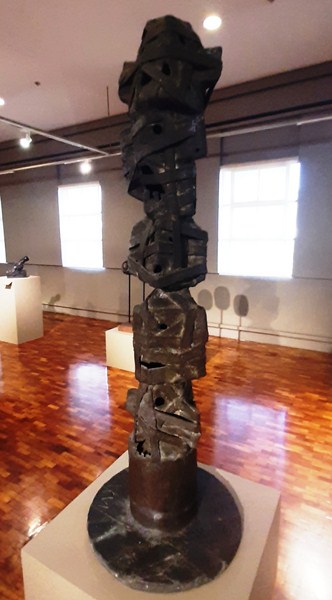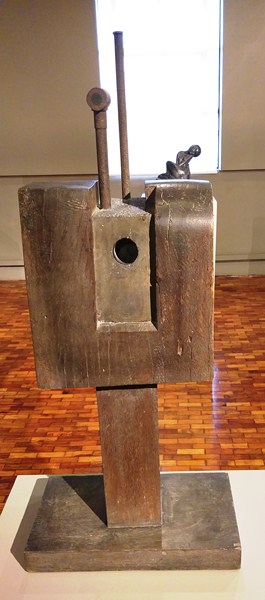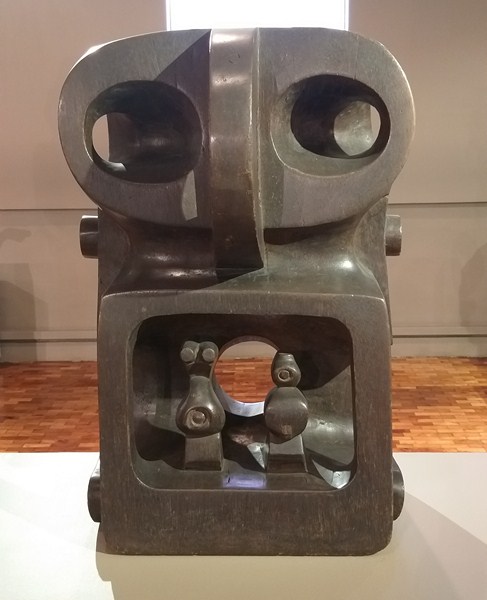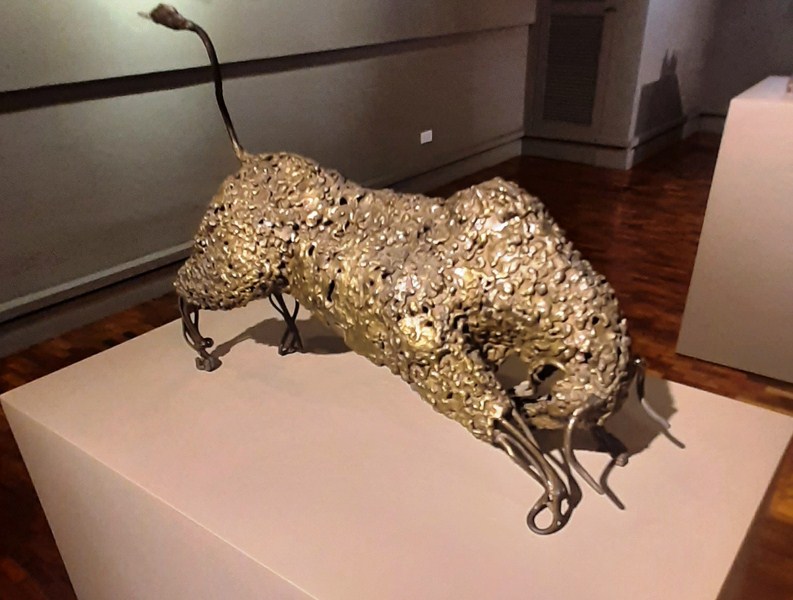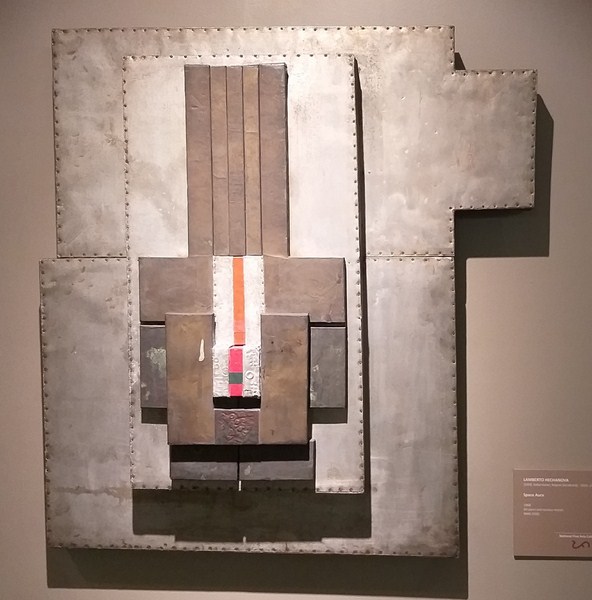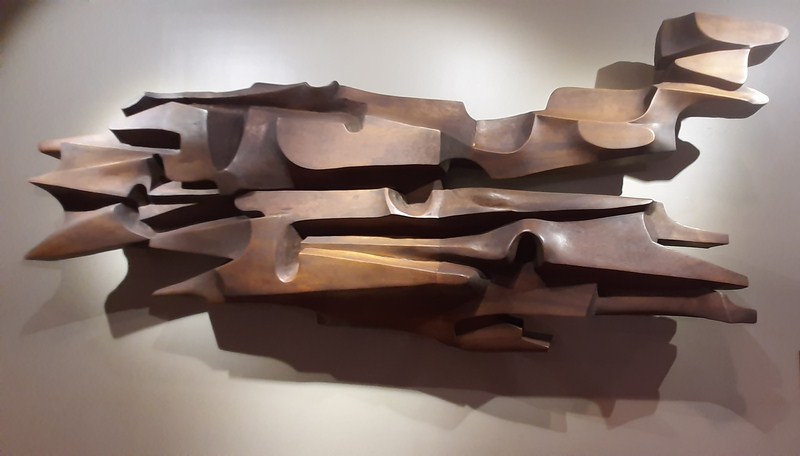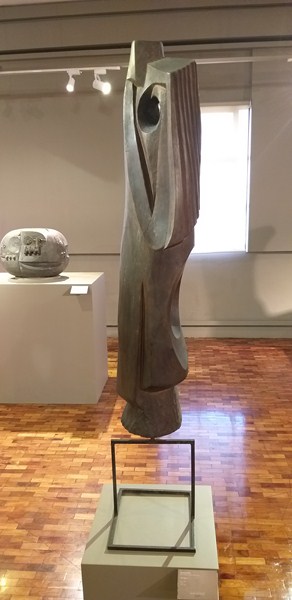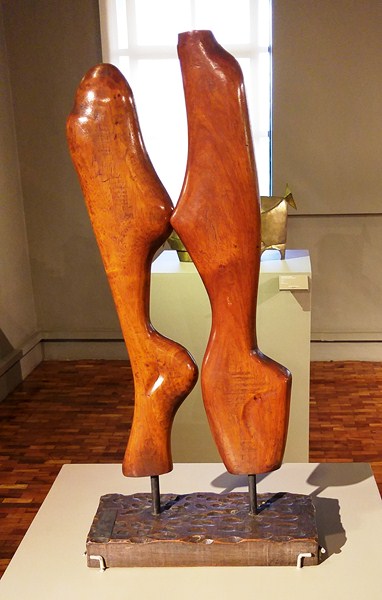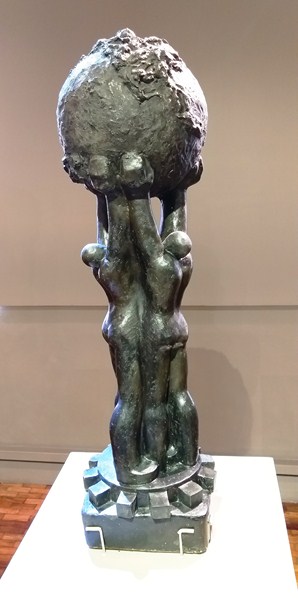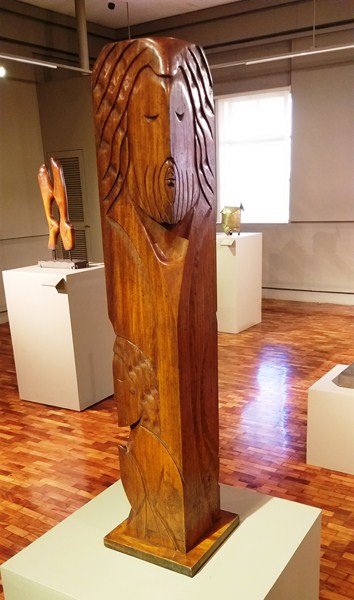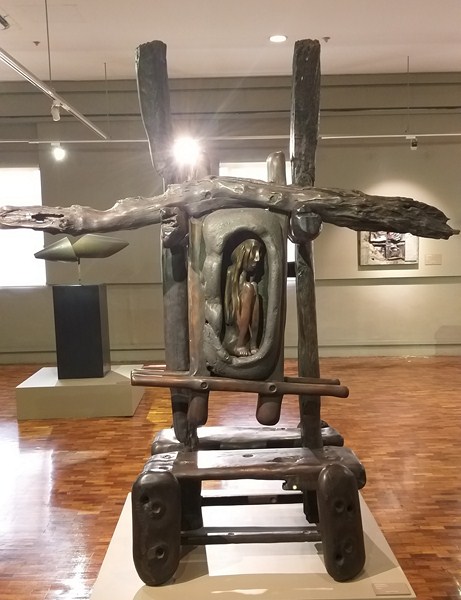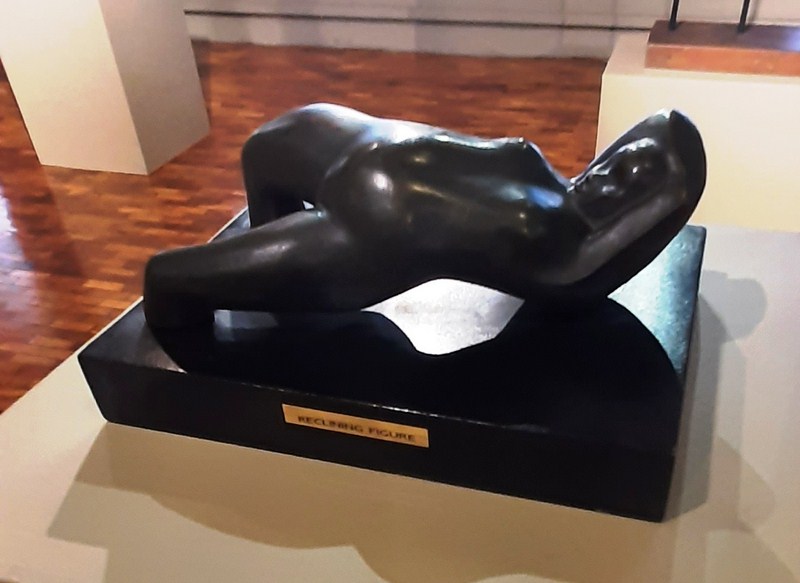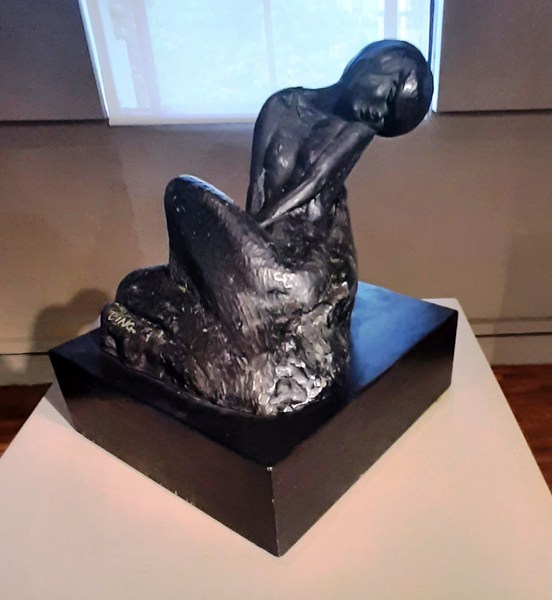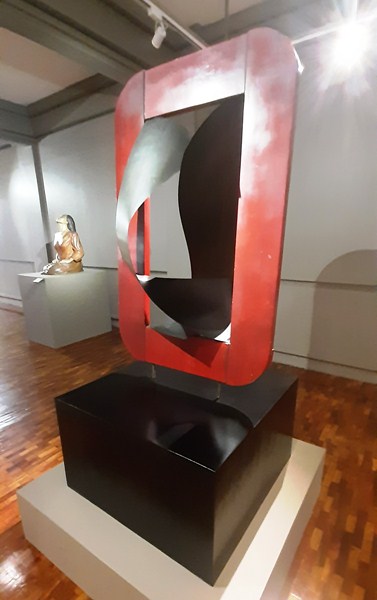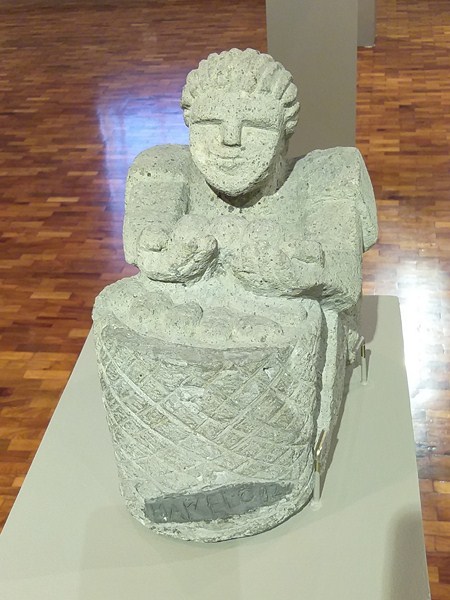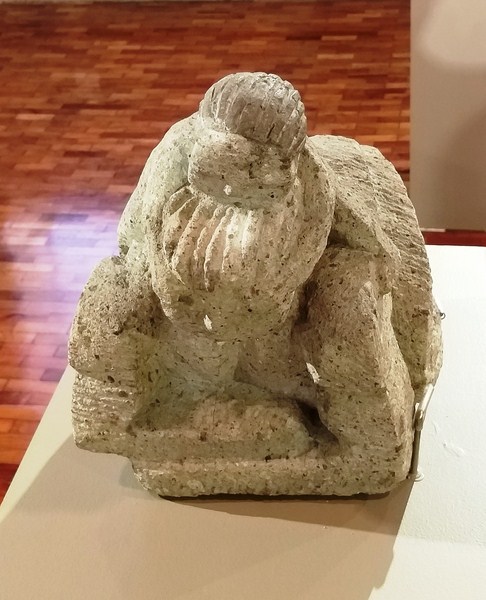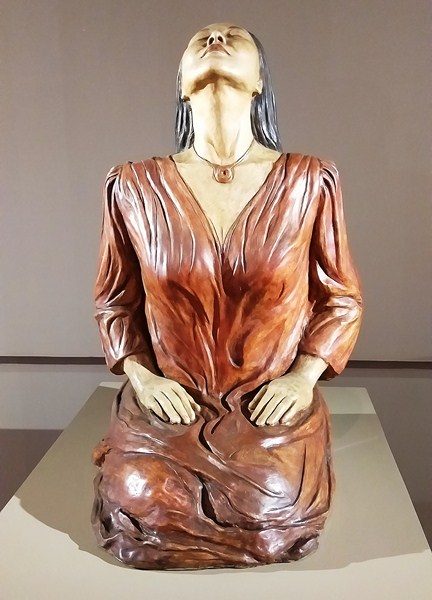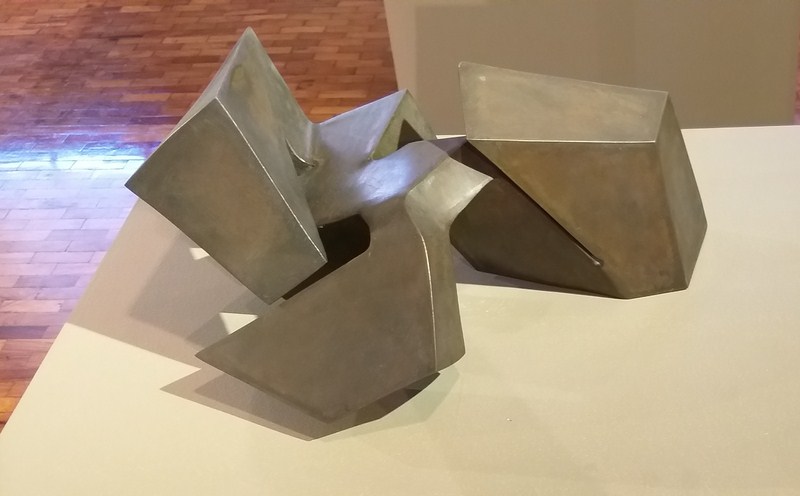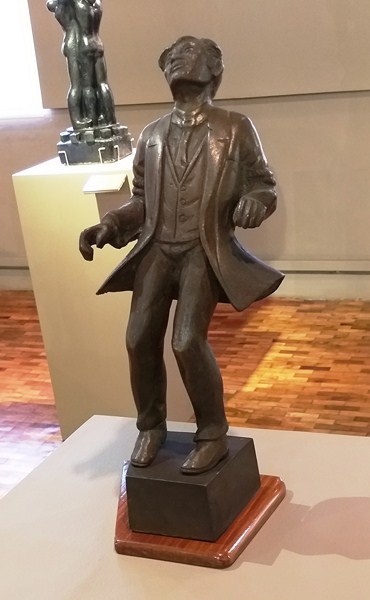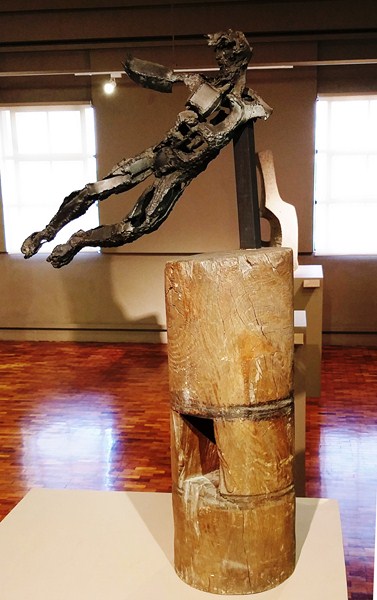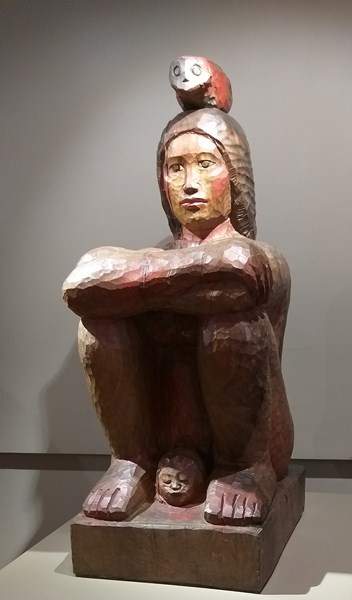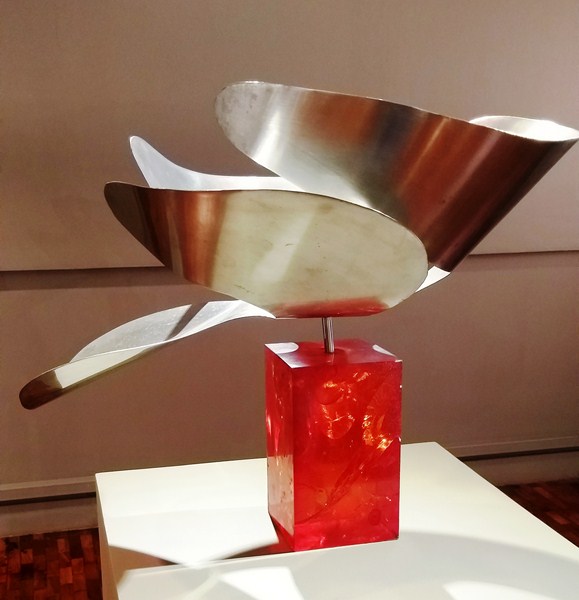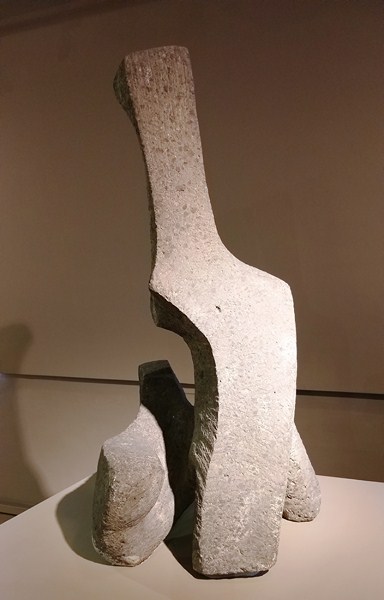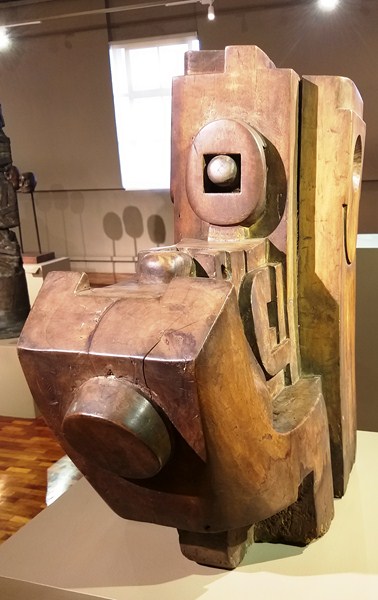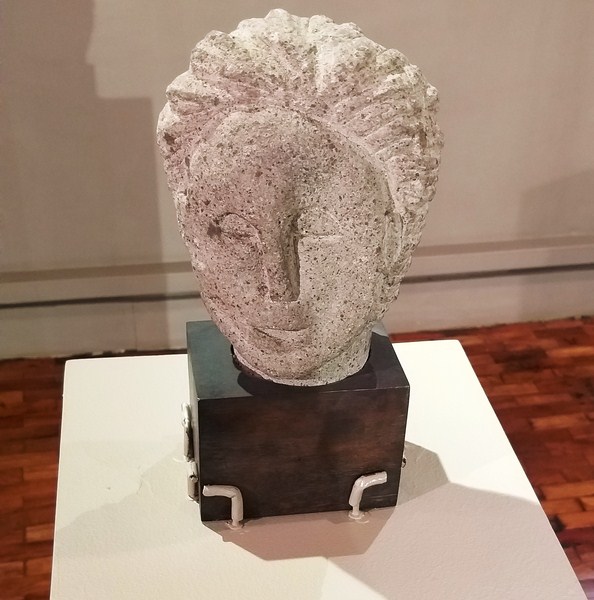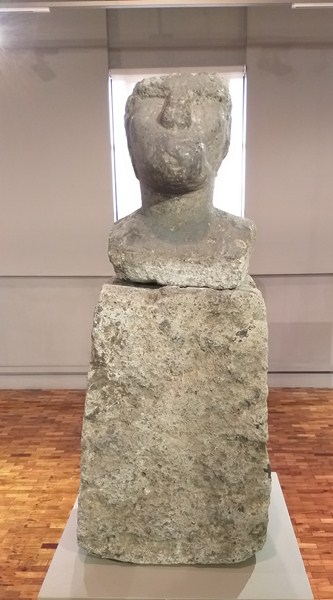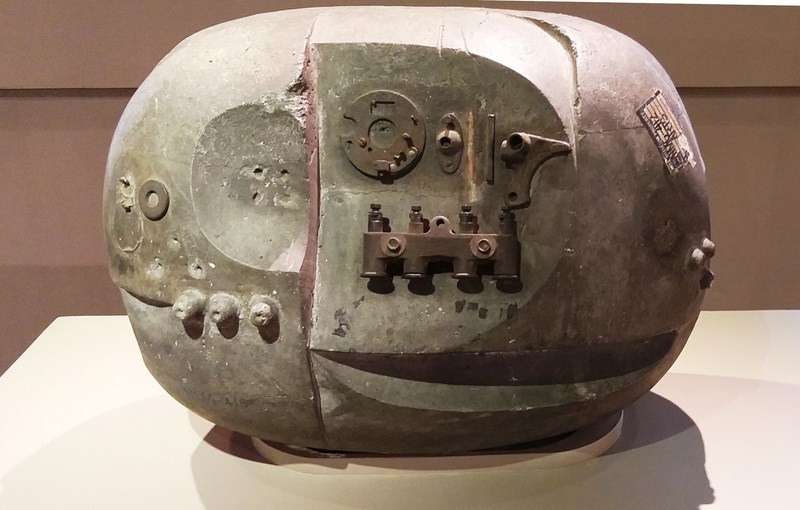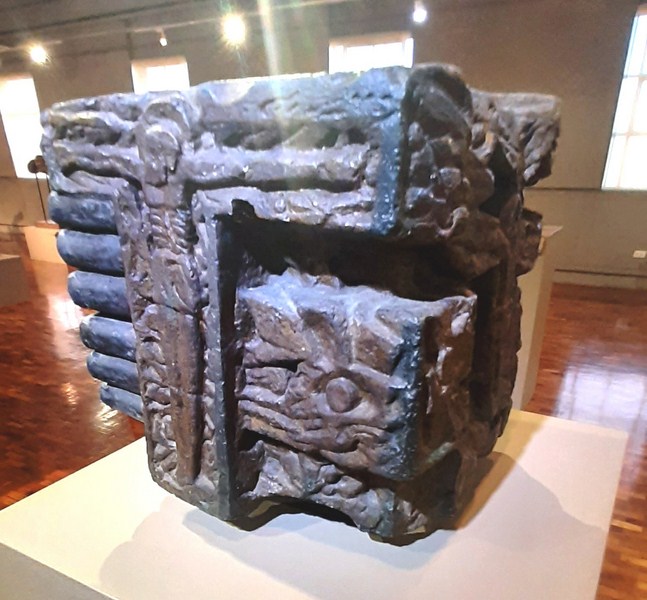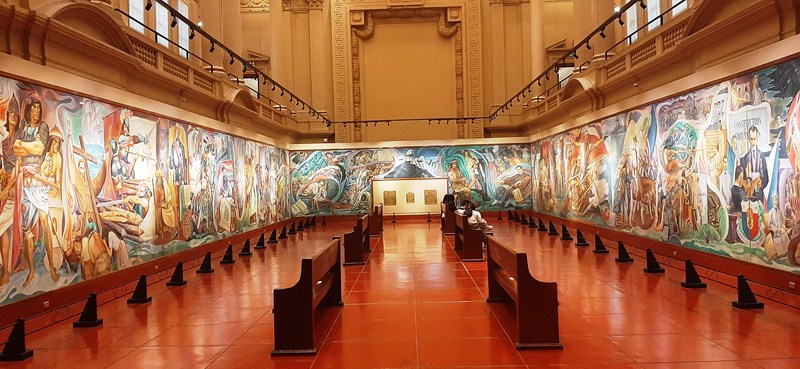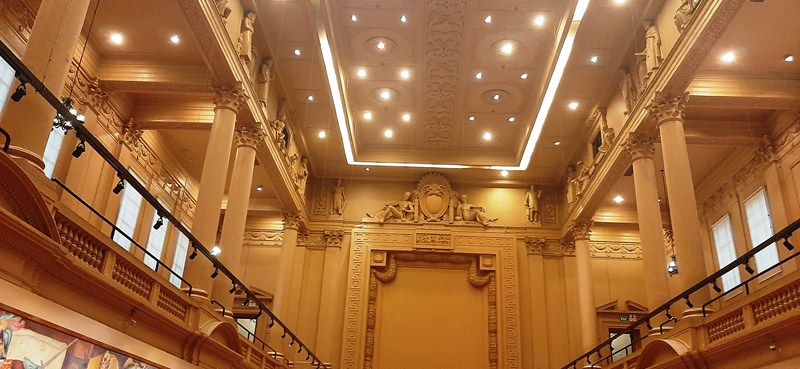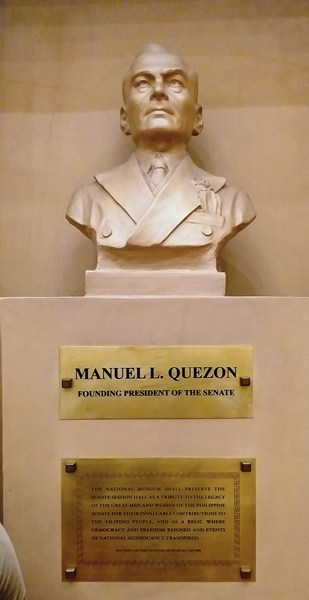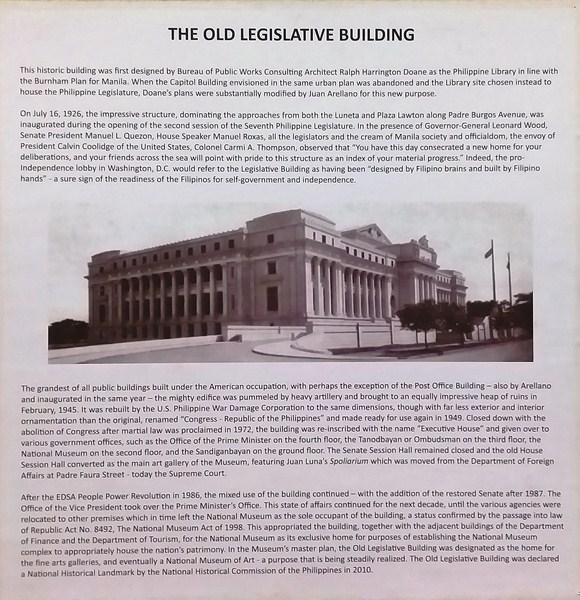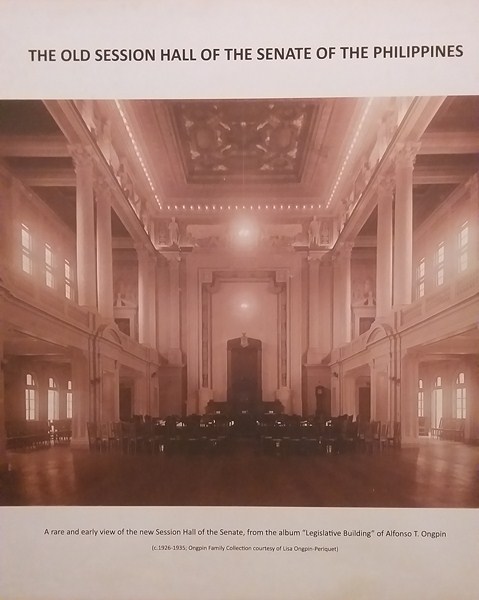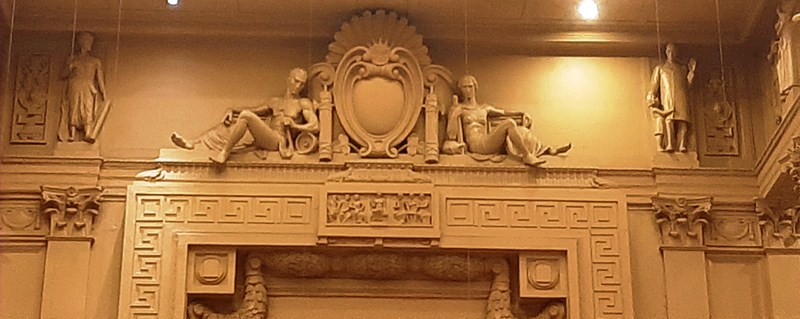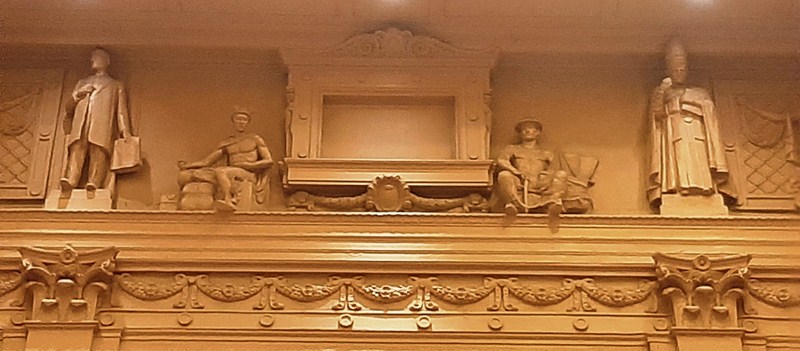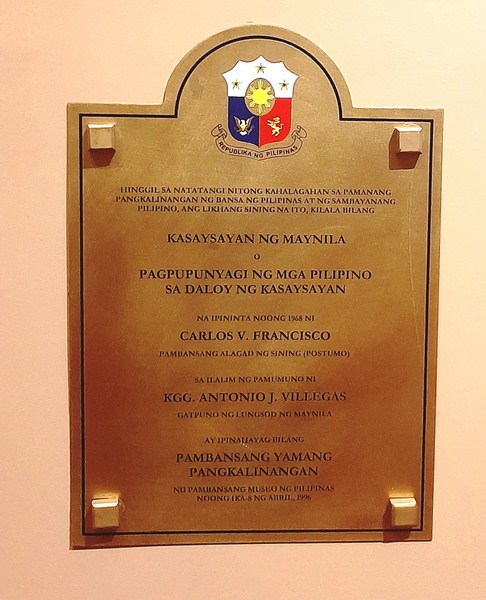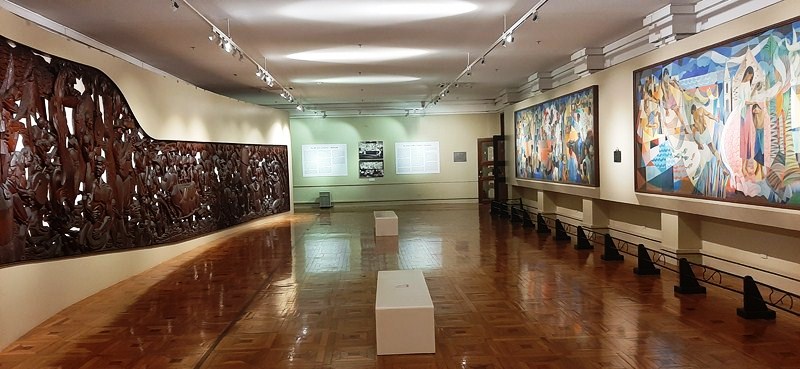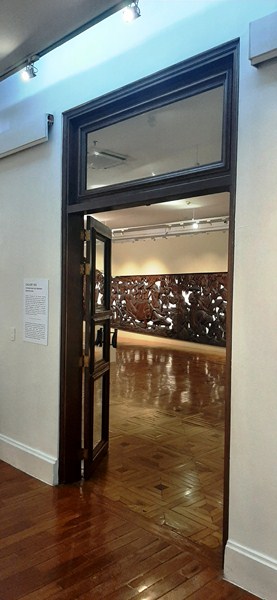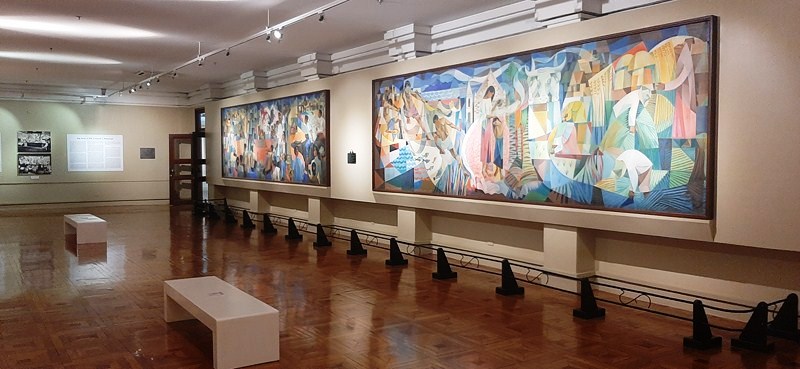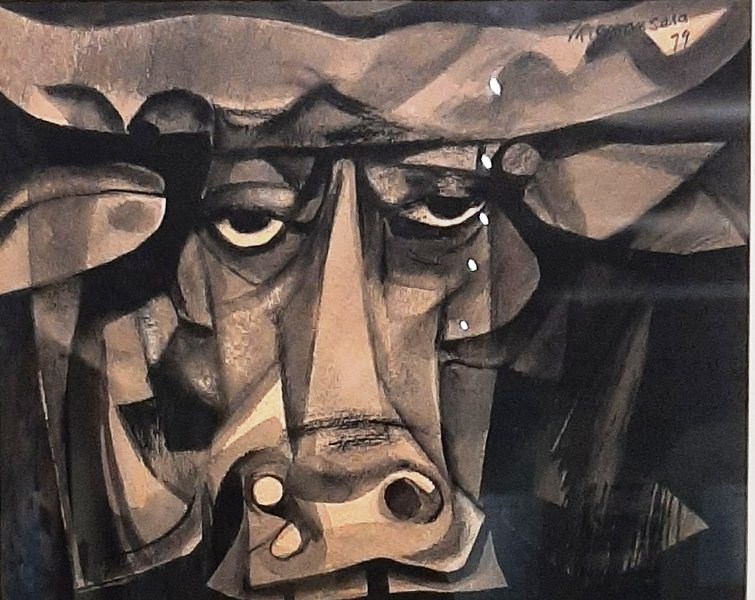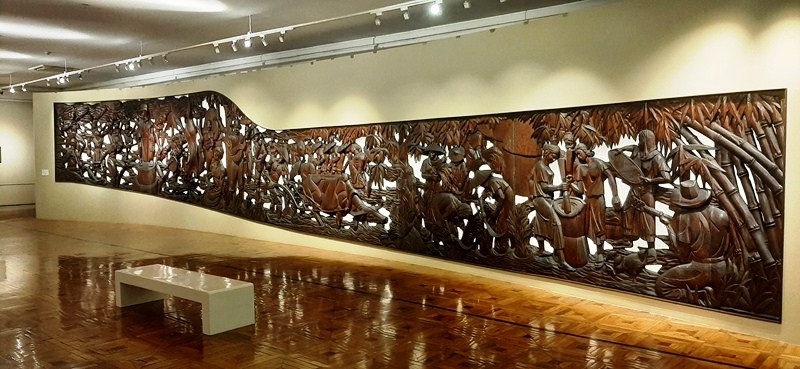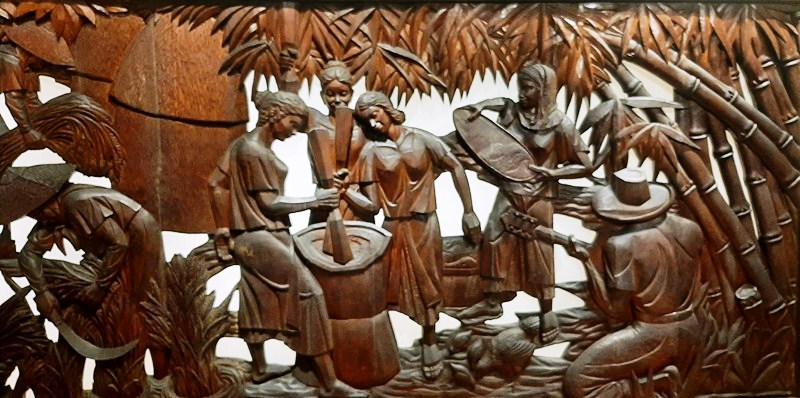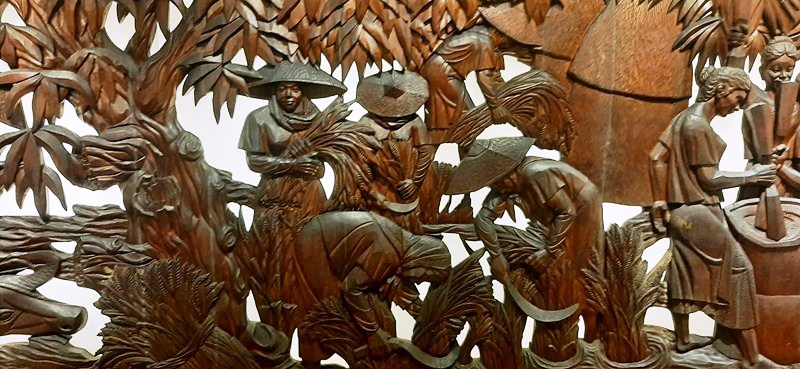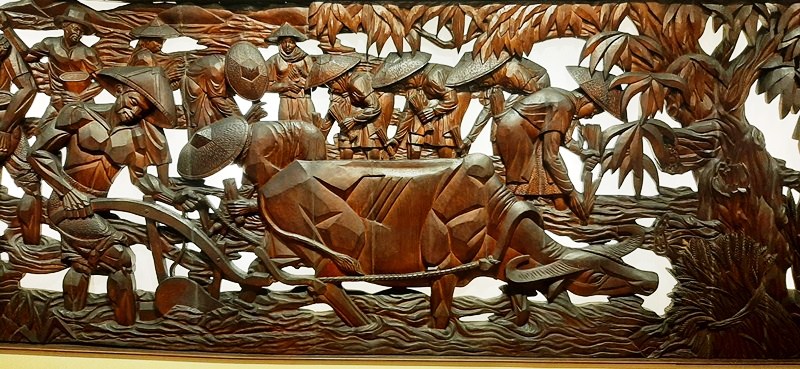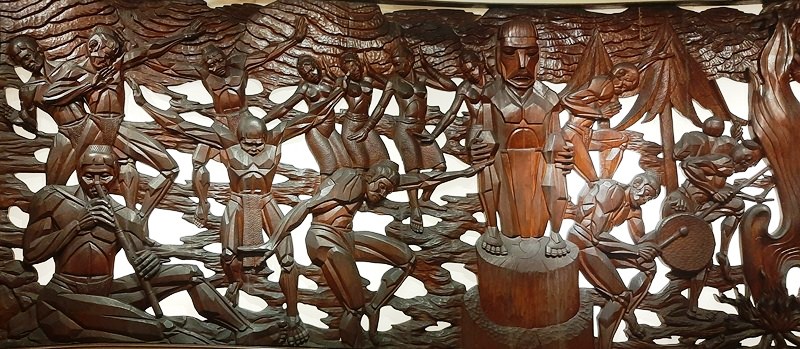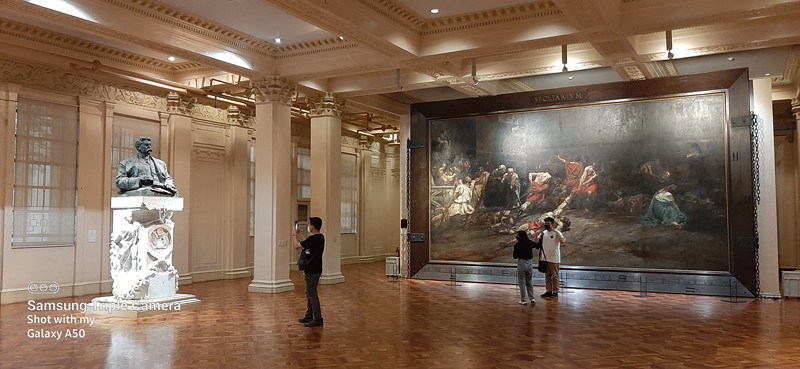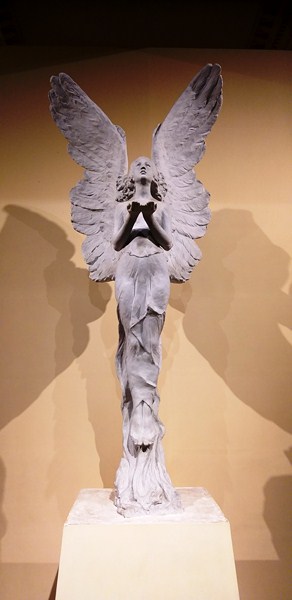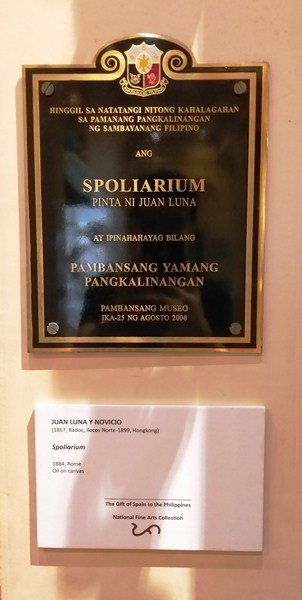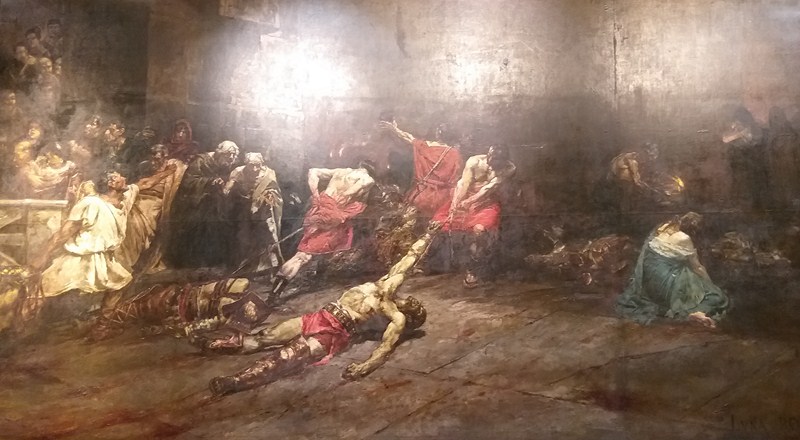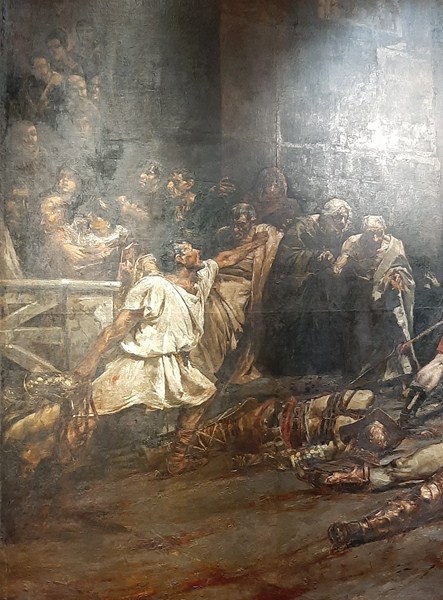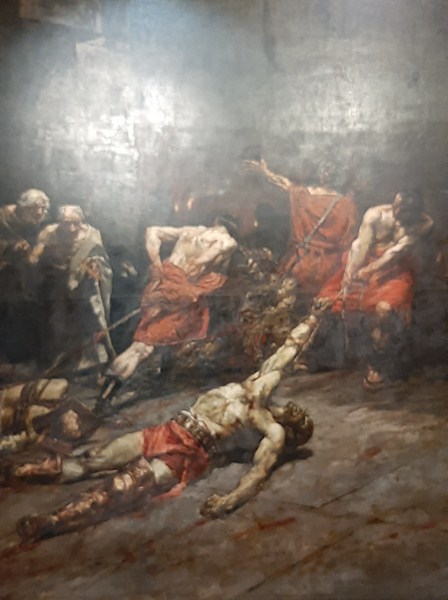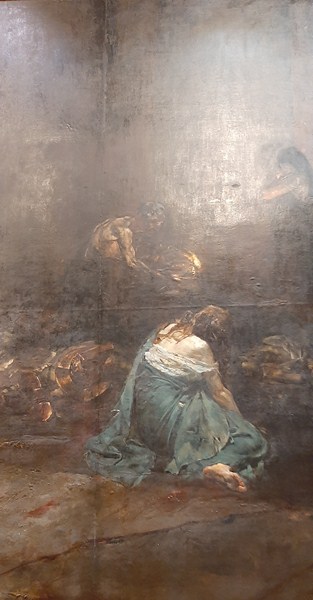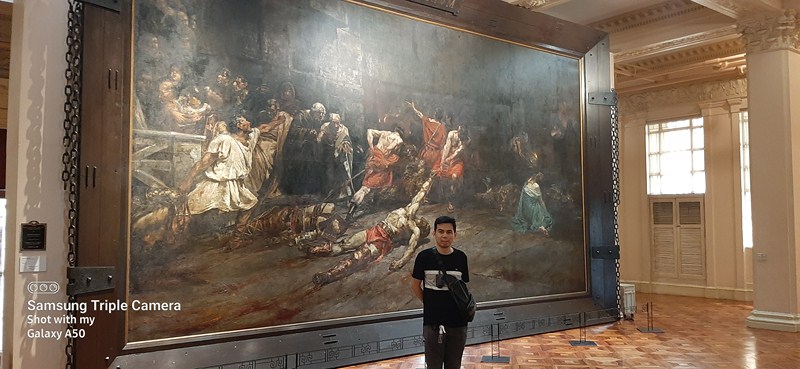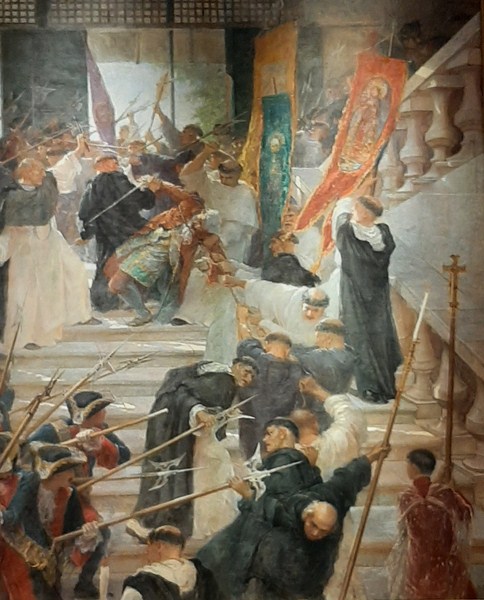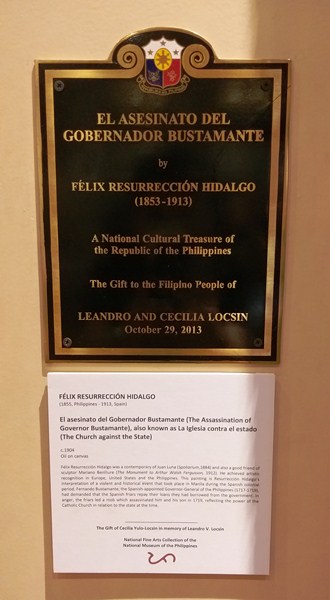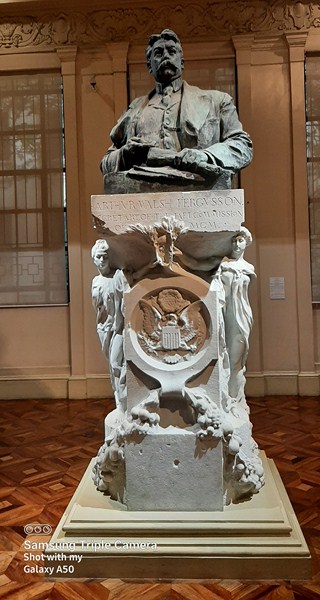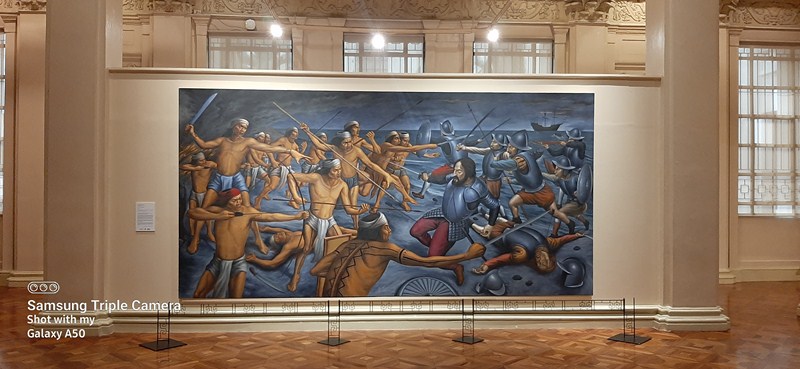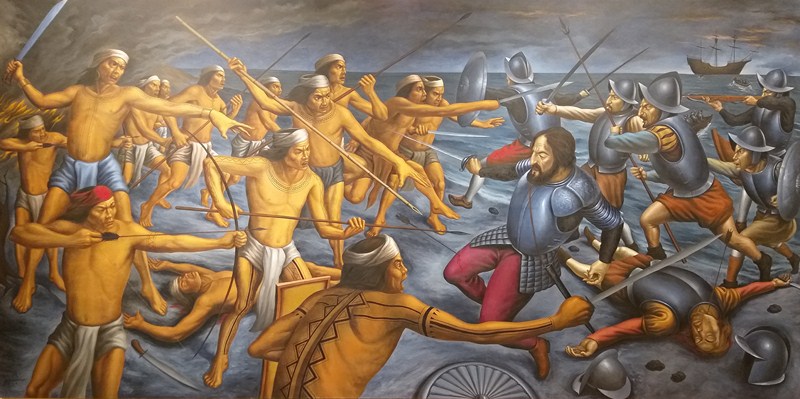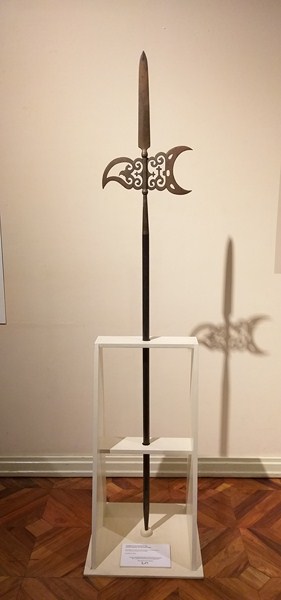Carve, Mold, and Assemble (Lilok, Hulma at Tipon): Modern Sculptures in the Philippines, a permanent exhibit at the fourth floor of the National Museum of Fine Arts, is dedicated to Philippine Modern Sculptures.
Check out “National Museum of Fine Arts”
Featured here are notable works of Abdulmari Asia Imao (1936-2014), National Artist for Sculpture in 2006; Arturo R. Luz (1926-2021), National Artist for Visual Arts in 1997; and Jerry Elizalde Navarro (1924-1999), National Artist for Visual Arts in 1999.
Imao wanted to improve, revitalize and popularize the sarimanok (an ornate chicken-like figure or a decorative bird notable in Maranao Art and considered to be as old as their epics) style and he produced a number of artworks of the indigenous motif from the Southern Philippines in various media.
His 1996 brass sculpture, entitled Sarimanok, a 2 m. high sculpture work of art, was given, through the Magbassa Kita Foundation, Inc., as a gift to the Filipino people by the family of the Late National Artist on July 23, 2015.
Also in this exhibition gallery are his three bronze sculptures, two sculptures entitled as Fishes, dated 1976, and another Sarimanok (1969).
The works of Arturo R. Luz on display at the gallery are his experiment with sculptural abstraction using metal, concrete and wood which began in 1969.
As with his paintings, he continued the Neo-Realist themes and the linear simplicity and geometric form in his geometric sculptural work.
The sculpture of Jerry Elizalde Navarro, an avid experimenter and versatile craftsman, are actually assemblages constructed out of found objects and discarded machine parts.
His linear sculptures use rods, pipes and mixed media using plexiglass sheets. His wife, Virginia Ty-Navarro (1924-1996), is also an artist whose bronze and brass sculpture Taurus (1975) is also on display in the gallery.
Works of other renowned artists are also on display here. Lamberto R. Hechanova (1939-2014), reputed as an incubator of Modernist sculpture in the 1960s, introduced the combined use of aluminum with wood and plexiglass in his massive and innovative sculptures and assemblages.
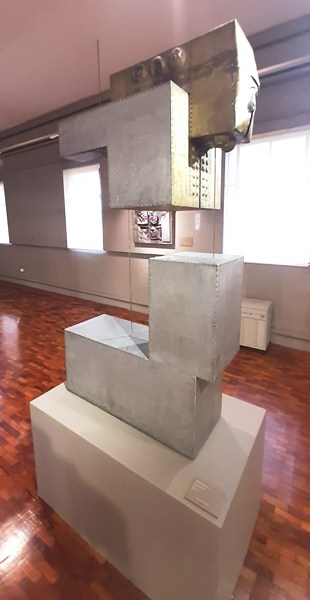
Allegory in Aluminum (1968, aluminum and glass), by Lamberto Hechanova, landed first place at the First Exhibition of Philippine Sculptors in 1968
Renato Rocha (1937-2001) used acacia, molave and narra in sculpting abstracted figures of animals, family, women and other free forms as they were stylishly economical, glowing with mellow warm patinas and strong and lasting in character.
Federico D. Estrada (1915 – 1999), a lesser known contemporary of Vicente Manansala, was the first Filipino to work at the atelier of Pietro Amberti.
Pietri taught him the secrets of synthetic marble, floating strips, spray dotting, molding and general sculpturing from 1932-1940.
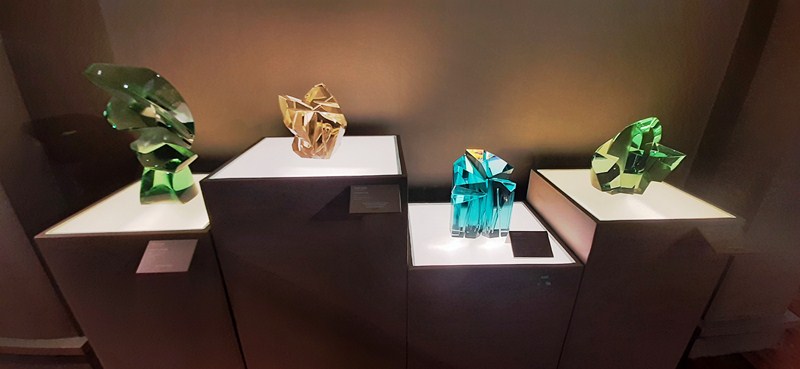
Ramon Orlina glass sculptures. L-R: Lumba-Lumba (1988, carved green glass), Community of Joy (2020, carved peach amber glass), Gothic (1988, carved green glass) and Elegance in Simplicity (2020, carved green glass)
Ramon Orlina (b. 1944), who transfigured glass into art, was the first to carve figures out of blocks of glass using the cold method, cutting, grinding, and polishing his work with improvised tools and instruments, a feat at that time yet unreplicated even in highly industrialized countries.
Rey Paz Contreras (1950 – 2021) worked with urban refuse and environmental materials as artistic media. He was inspired by the indigenous Filipino culture and created visual forms of contemporary images that explore a distinct Filipino aesthetics.
Filipino-Chinese sculptor Ting Ping Lay’s (1927 – 2021) simple, minimalist, and semi-abstract works features figures that are quietly and gently contorted, placed in poses that are restrained, dignified, and mature. His two sculptures (Early Spring and Supine) were donated by his son Lionel Ting on December 18, 2020.
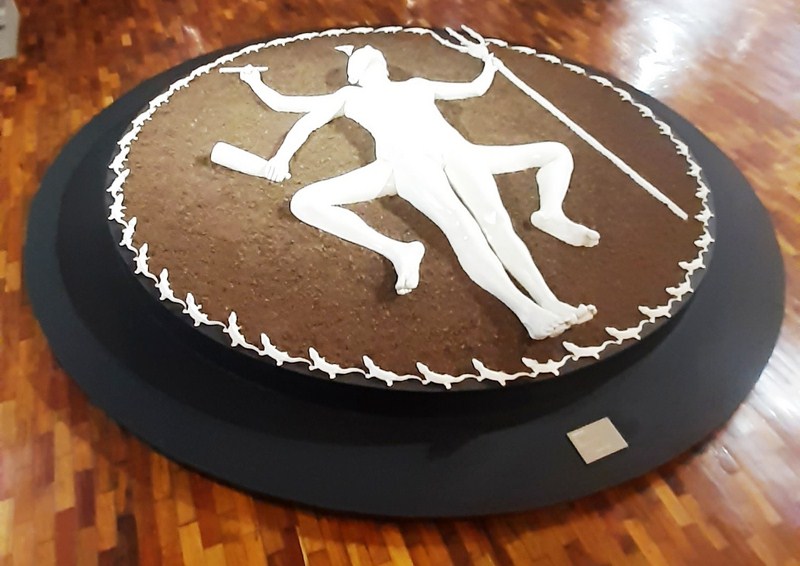
Eshu (1997, cold-cast marble and volcanic cinder), a floor piece by Agnes Arellano, was created for the Sixth Biennial of Havana and was exhibited there. Eshu, the “Lord of the Crossroads,” the mediator between men and the gods, is shown with two pairs of feet and three hands. He holds a cigar, a trident and a wine bottle.
Agnes Arellano (b. 1949) works primarily in plaster, making life-size figure sculptures. Her work explores women’s issues relative to the portrayal of women in traditional Asian sculpture by reinterpreting local myths.
Jose F. Datuin (b. 1956) is known for his ability to use lightly visualized symbolism with stainless steel as his material. He is also known for circular abstractions which demonstrate unity, both in material and form.
Ildefonso Marcelo (b. 1941) is known for using blocks of stone in creating figures that connote strength and permanence.
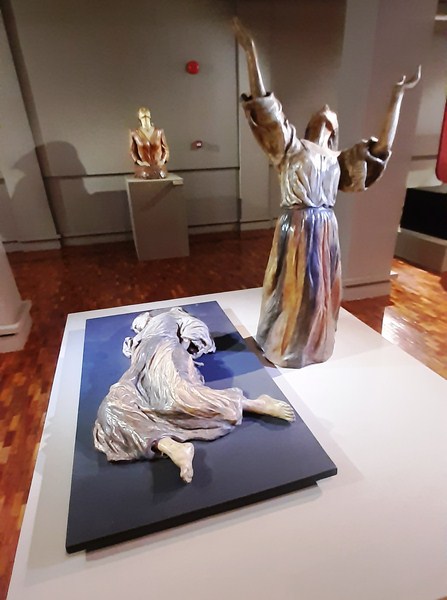
Doxology (Julie Lluch, terracotta and acrylic) consists of two life-size works representing the two selves of the same woman. One is sprawled on the ground, cold and lifeless, while the other is alive.
Julie Lluch (b. 1946), a self-taught sculptor, became seriously involved in art in 1976. Working in terracotta, stone, ceramic and bronze, she is known for her life-size portraits and groups that present satirical commentaries on the relationship between the sexes.
Eduardo Castrillo (1942 – 2016), considered to be the most avant-garde sculptor in the Philippines, he created, with the help of a group of assistants, sculptures by hammering, cutting and welding metal, especially brass, bronze and steel.
He also incorporated other materials (wood, plastic, plexiglass, ivory, neon lights, etc.) into his works and his oeuvre included free-standing abstract pieces, functional art pieces, art jewelry, body sculptures and liturgical art.
Solomon Saprid (1917 – 2003) was best known for his Brutalist School bronze sculptures. He welded scraps of metal together and the intricately sculpted brass details produced a characteristic jagged effect.
Duddley Diaz (b. 1947) created a powerful body of work that defies categorization, with sculptures that challenge notions of identity, sexuality, culture, and history.
Departing from the impersonal and rationalist aesthetic of academic art, his work daringly combines the values of classical Renaissance sculpture with atavistic sources of inspiration in the figures of ancient mythology and Christian liturgical art.
Rosario “Charito” Bitanga Peralta (b. 1934) is the Philippines’ first and foremost woman abstract artist. Her creative sculpture, consisting of metal and terracotta pieces, was predominantly inspired by the 1950s Abstract Expressionism and Minimalism.
Other artists featured include Francisco Cruz, Rosalio Alcala, Jr., Ricaredo Demetillo (1920 – 1998), T. Rivera, Roberto Balajadia (b. 1945) and Ruben De Vera (b. 1942).
Carve, Mold, and Assemble: Modern Sculptures in the Philippines: Gallery XXIX, Philippine Modern Sculpture Hall, 4/F, National Museum of Fine Arts (NMFA), Padre Burgos Avenue, Ermita, Manila 1000, Metro Manila. Tel: (632) 8527-1215 and (632) 8298-1100. Email: inquiry@nationalmuseum.gov.ph. Website: nationalmuseum.gov.ph. Open Tuesdays to Sundays, 9 AM – 4PM. Admission is free. Coordinates: 14°35′13″N 120°58′52″E.


